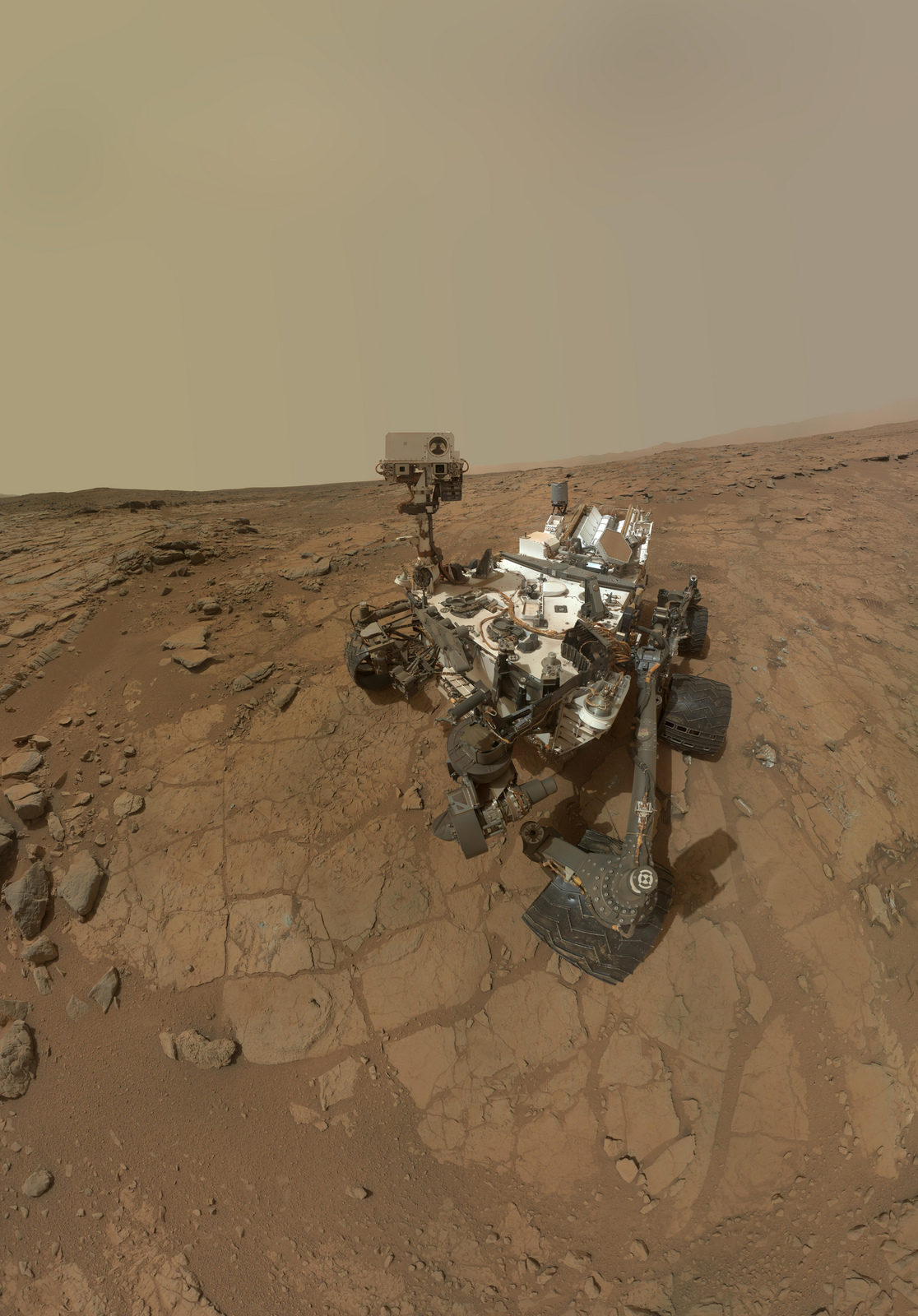NASA Unveiling New Mars Discoveries by Curiosity Rover Tuesday

NASA will reveal new discoveries about Mars gleaned from the Curiosity rover's first rock powder sample in a high-profile press conference on Tuesday (March 12).
The Mars rover press conference, which will be held at the agency's headquarters in Washington, will begin at 1 p.m. EDT (1700 GMT). It will be broadcast live on NASA's TV and webcast channels, a departure from recent teleconferences that have been a staple of Curiosity rover mission updates.
You can watch the Mars rover press conference on SPACE.com here.
NASA officials said the Tuesday press conference will "discuss the Curiosity rover's analysis of the first sample of rock powder ever collected on Mars."
Curiosity drilled into a Mars rock for the first time on Feb. 8 using a percussive drill tool mounted to its robotic arm. The rover drilled a 2.5-inch (6.4 centimeters) hole into a flat Mars rock called "John Klein," named after a NASA Curiosity rover project manager who died in 2011.
The first sample drilling on Mars revealed an odd, gray interior of Martian rock that stood out in stark contrast to the ubiquitous orange-red of the Red Planet's surface. Curiosity scooped up a sample of the gray rock powder and placed it inside two onboard laboratories, called the Chemistry and Mineralogy instrument and Sample Analysis at Mars, to determine its chemical makeup. [1st Mars Drilling on Mars by Curiosity (Photos)]
NASA is expected to discuss the results from those tests in Tuesday's press conference, which will include presentations by the following scientists:
Breaking space news, the latest updates on rocket launches, skywatching events and more!
- Michael Meyer, lead scientist, Mars Exploration Program, NASA Headquarters, Washington
- John Grotzinger, Curiosity project scientist, California Institute of Technology, Pasadena, Calif.
- David Blake, principal investigator for Curiosity's Chemistry and Mineralogy investigation, NASA's Ames Research Center, Moffett Field, Calif.
- Paul Mahaffy, principal investigator for Curiosity's Sample Analysis at Mars investigation, NASA's Goddard Space Flight Center, Greenbelt, Md.
NASA's Mars rover Curiosity landed on the Red Planet on Aug. 5 to begin a two-year primary mission aimed at determining if the planet is now, or could ever have been, capable of supporting primitive life. The $2.5 billion Curiosity is about the size of a car, making it the largest rover ever to explore Mars. It carries 10 different science instruments to study the Red Planet in unprecedented detail.
Curiosity landed inside the huge Gale Crater on Mars and is currently at a site called Yellowknife Bay, which is home to the John Klein rock. The rover is ultimately destined to a region dubbed Glenelg, which is near the base of a 3-mile-high (5 kilometers) mountain rising from the center of Gale Crater.
Email Tariq Malik at tmalik@space.com or follow him @tariqjmalik and Google+. Follow us @Spacedotcom, Facebook and Google+. Original article on SPACE.com.

Tariq is the award-winning Editor-in-Chief of Space.com and joined the team in 2001. He covers human spaceflight, as well as skywatching and entertainment. He became Space.com's Editor-in-Chief in 2019. Before joining Space.com, Tariq was a staff reporter for The Los Angeles Times covering education and city beats in La Habra, Fullerton and Huntington Beach. He's a recipient of the 2022 Harry Kolcum Award for excellence in space reporting and the 2025 Space Pioneer Award from the National Space Society. He is an Eagle Scout and Space Camp alum with journalism degrees from the USC and NYU. You can find Tariq at Space.com and as the co-host to the This Week In Space podcast on the TWiT network. To see his latest project, you can follow Tariq on Twitter @tariqjmalik.
